Idea by
Adam Marcus, Margaret Ikeda, Evan Jones
Architectural Ecologies Lab
https://architecturalecologies.cca.edu/
Call for ideas 2020
Buoyant Ecologies
Buoyant Ecologies
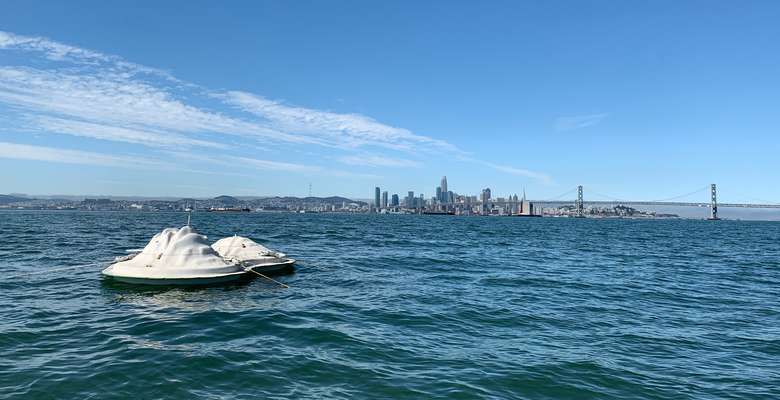
- Systemic changes
The Buoyant Ecologies project melds scientific research with visionary aspirations for a floating architecture that is predicated on mutually beneficial coexistence between humans and nonhumans. Building upon five years of proof-of-concept prototypes for ecologically optimized substrates that provide diverse habitats for marine invertebrates, the project seeks to leverage techniques of computation and digital fabrication to instigate new models for a whole-system concept of human habitation, nonhuman habitation, and ecological resilience in anticipation of the impacts of sea-level rise.
The project imagines a coastal ecology in which humans and animals are linked in mutual contingency. In contrast to anthropocentric technologies of “resilience” motivated primarily by self-preservation, the Buoyant Ecologies project offers an alternative strategy for human adaptation to ecological change: one that both depends on and supports the health and diversity of nonhuman marine species.
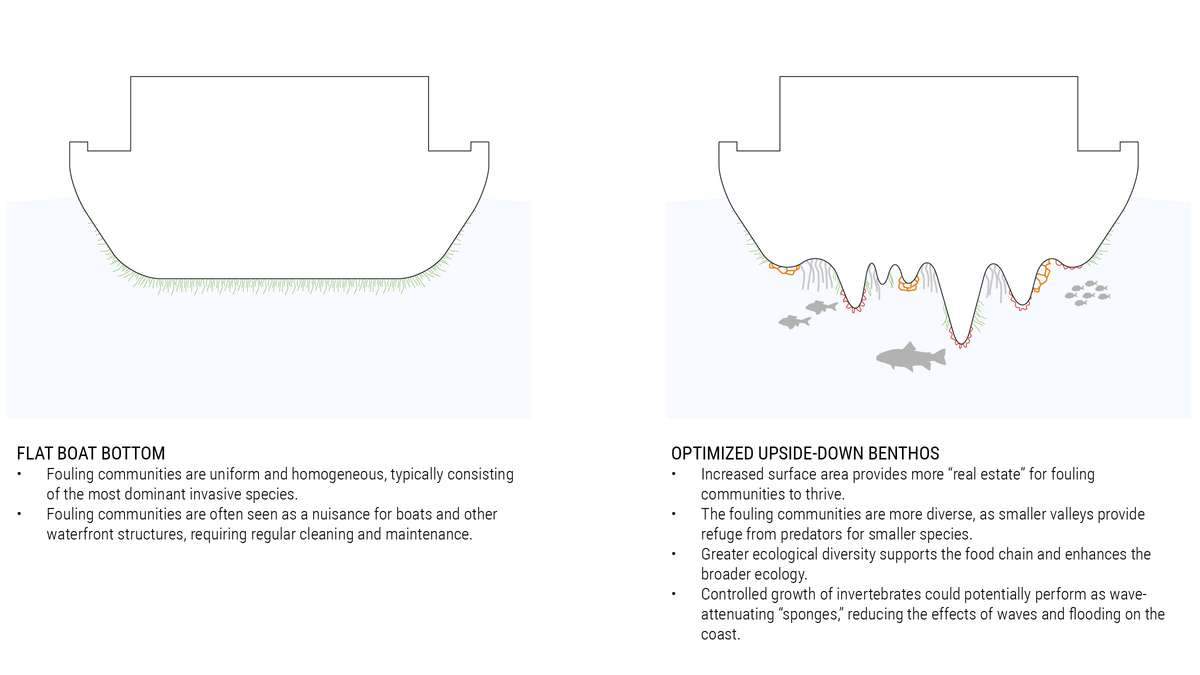
The research challenges conventional notions of “biofouling”—the unwanted accumulation of marine life on the underside of floating structures—and instead proposes controlled upside-down habitats for nonhuman animals as an ecological resource. This helps to promote ecological diversity and support biological growth that in large quantities can help attenuate wave action.
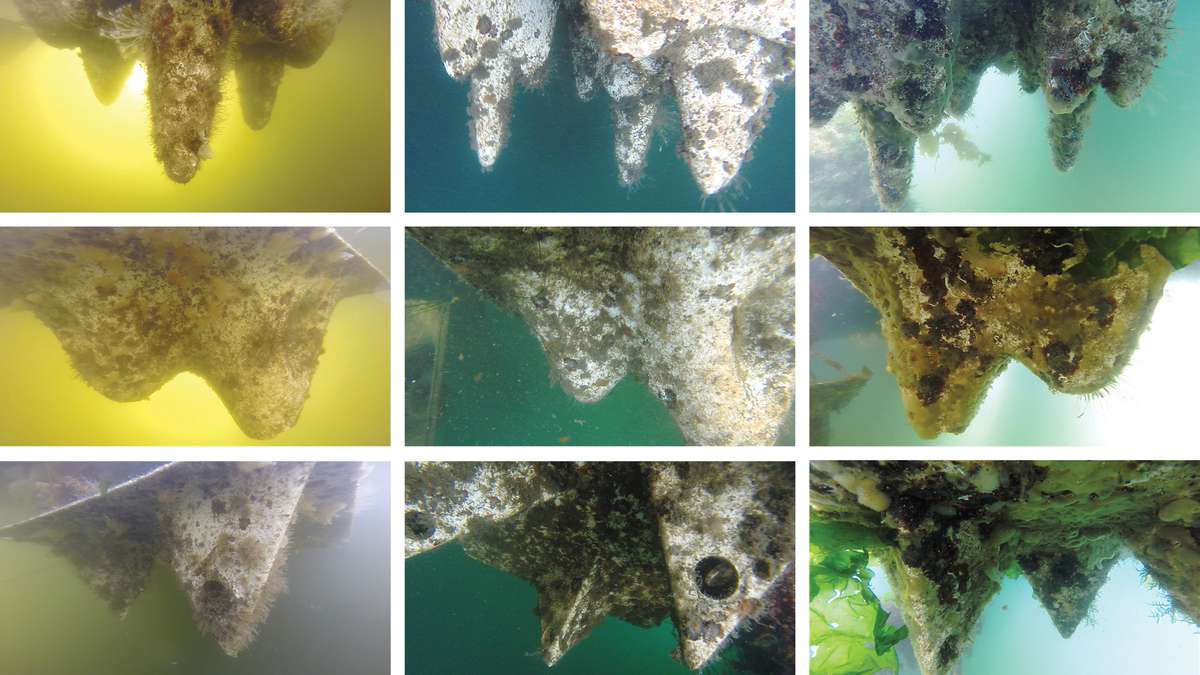
Since 2014, nearly two dozen full-scale ecological substrate prototypes have been produced for testing and monitoring different surface geometry, slopes, and dimensional parameters for the “hillocks” and “valleys” along the substrate. These prototypes have confirmed that the substrates perform remarkably well as upside-down habitats for a diverse range of invertebrate species, including bryozoans, tube worms, sponges, crabs, nudibranchs, tunicates, crustaceans, mollusks, and sea urchins.
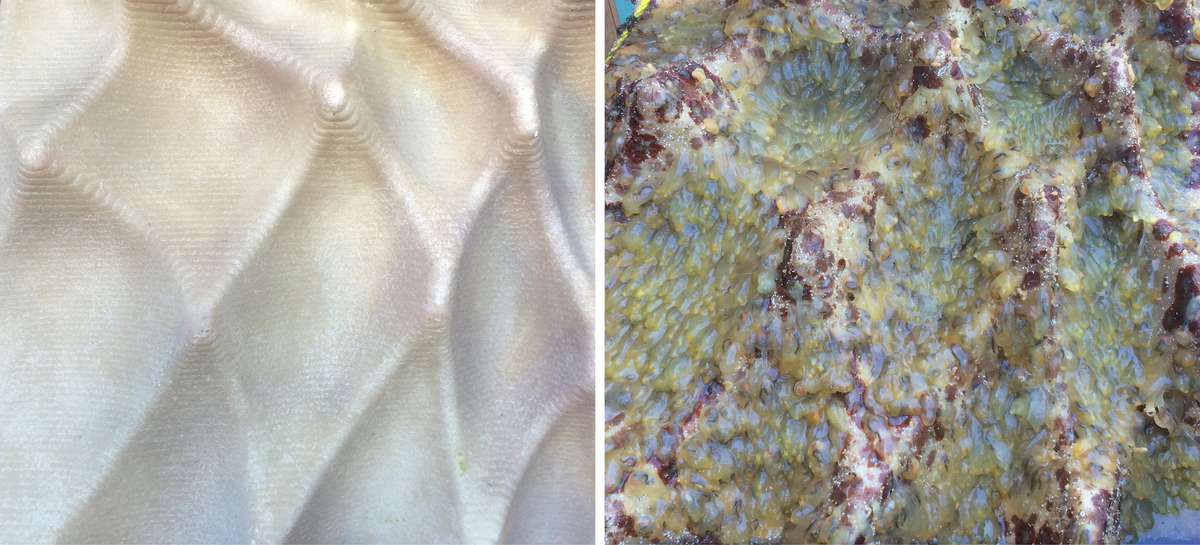
Comparison of ecological substrate prototype before underwater installation (left) with the same prototype after 12 weeks installed underwater in Monterey Bay (right) reveals that variable topographies can yield variable settlement patterns of marine invertebrates.
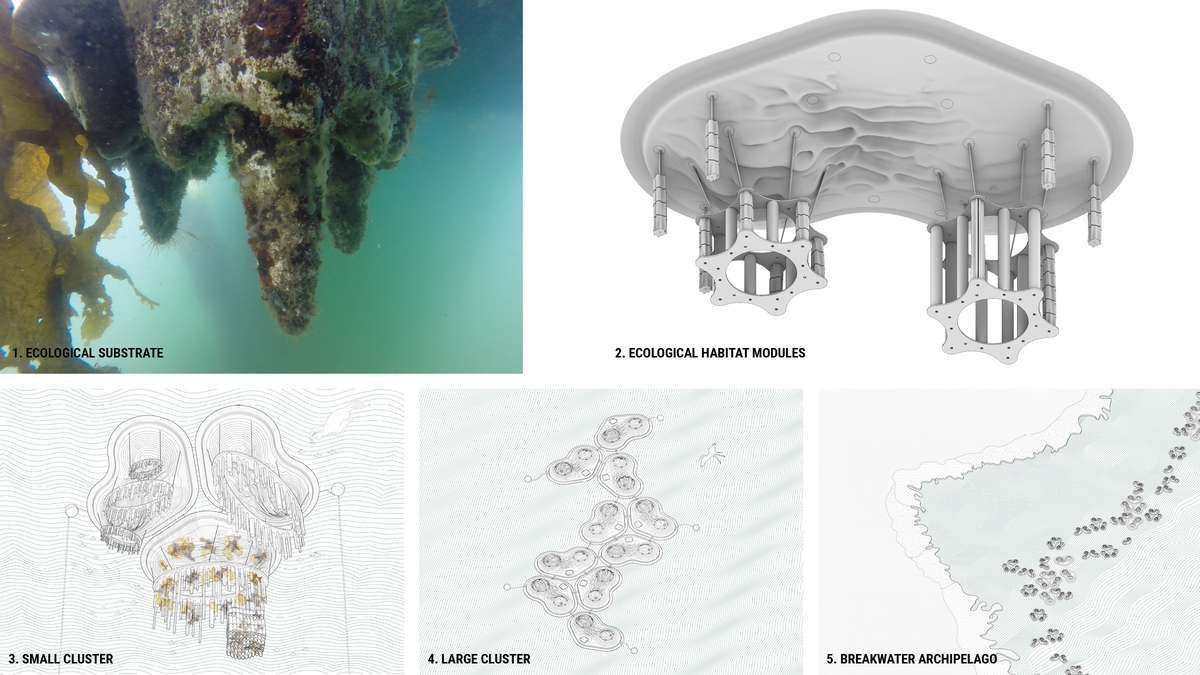
These drawings imagine a larger-scale deployment of floating breakwaters as a means to reduce coastal erosion and the impacts of sea level rise on shorelines. The necklace of buoyant wave-attenuating structures offers an adaptable and reconfigurable alternative to the more conventional fixed and permanent typologies of seawalls and barriers that many cities currently look to as models for coastal resilience.
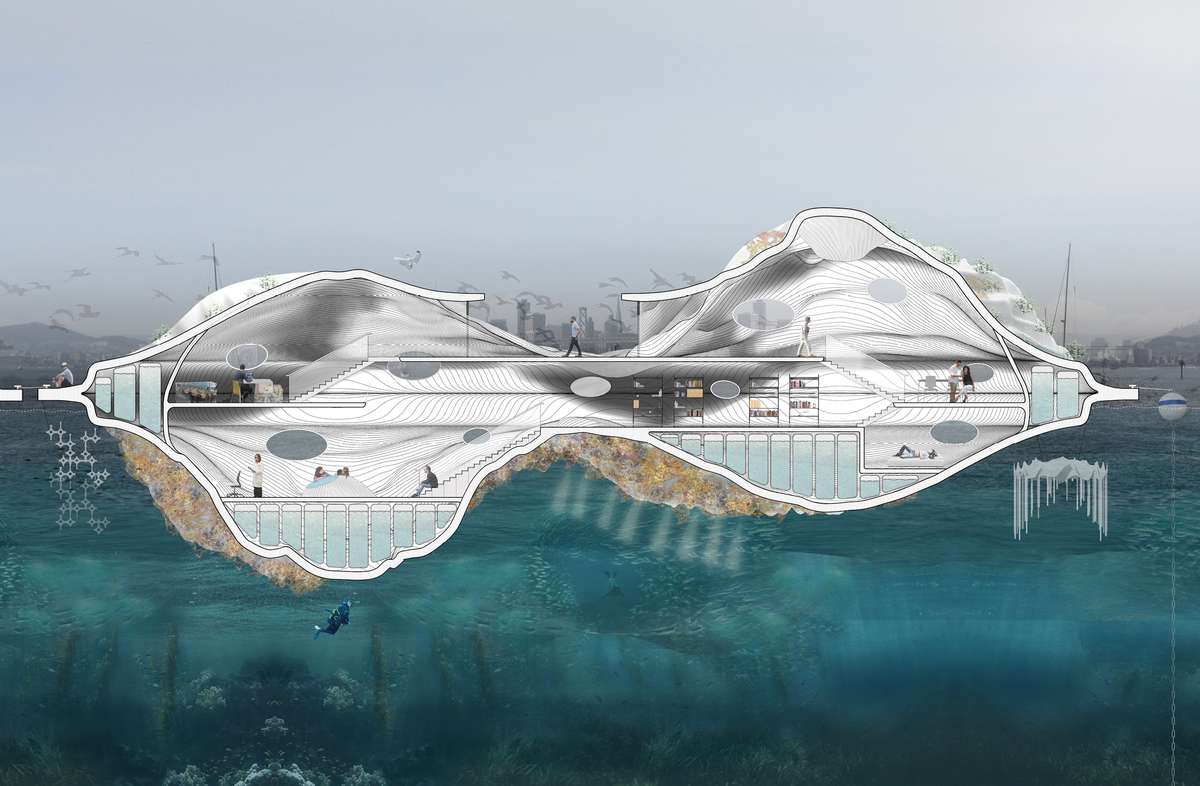
Although grounded in empirical, scientific research, the project also embraces more visionary aspirations for a floating architecture of the future predicated on mutually beneficial coexistence between humans and nonhumans. This speculative section begins to imagine how the Float Lab can scale up to inhabitable, multifunctional, self-sufficient floating structures that provide habitats for humans and animals.
Buoyant Ecologies
Buoyant Ecologies

- Systemic changes
The Buoyant Ecologies project melds scientific research with visionary aspirations for a floating architecture that is predicated on mutually beneficial coexistence between humans and nonhumans. Building upon five years of proof-of-concept prototypes for ecologically optimized substrates that provide diverse habitats for marine invertebrates, the project seeks to leverage techniques of computation and digital fabrication to instigate new models for a whole-system concept of human habitation, nonhuman habitation, and ecological resilience in anticipation of the impacts of sea-level rise.
The project imagines a coastal ecology in which humans and animals are linked in mutual contingency. In contrast to anthropocentric technologies of “resilience” motivated primarily by self-preservation, the Buoyant Ecologies project offers an alternative strategy for human adaptation to ecological change: one that both depends on and supports the health and diversity of nonhuman marine species.

The research challenges conventional notions of “biofouling”—the unwanted accumulation of marine life on the underside of floating structures—and instead proposes controlled upside-down habitats for nonhuman animals as an ecological resource. This helps to promote ecological diversity and support biological growth that in large quantities can help attenuate wave action.
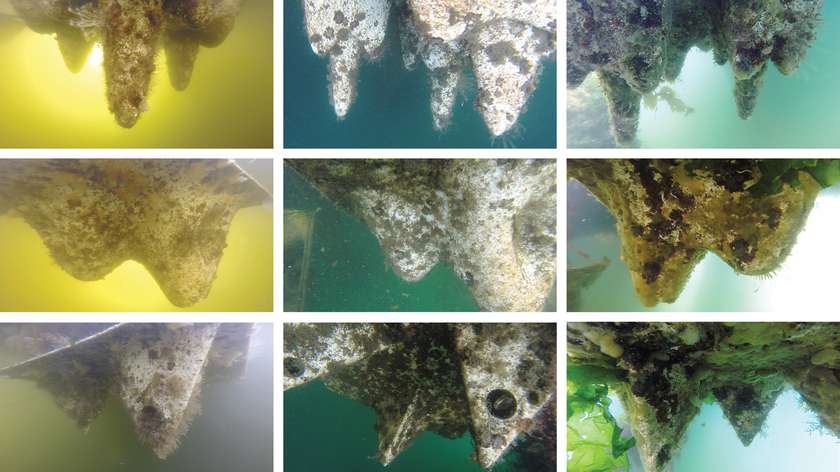
Since 2014, nearly two dozen full-scale ecological substrate prototypes have been produced for testing and monitoring different surface geometry, slopes, and dimensional parameters for the “hillocks” and “valleys” along the substrate. These prototypes have confirmed that the substrates perform remarkably well as upside-down habitats for a diverse range of invertebrate species, including bryozoans, tube worms, sponges, crabs, nudibranchs, tunicates, crustaceans, mollusks, and sea urchins.
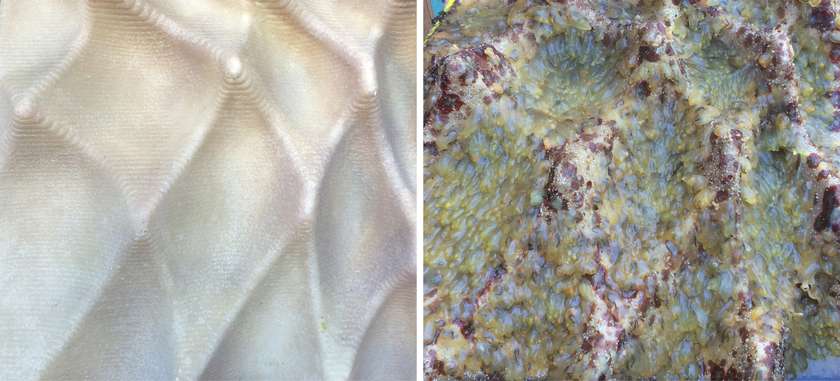
Comparison of ecological substrate prototype before underwater installation (left) with the same prototype after 12 weeks installed underwater in Monterey Bay (right) reveals that variable topographies can yield variable settlement patterns of marine invertebrates.

These drawings imagine a larger-scale deployment of floating breakwaters as a means to reduce coastal erosion and the impacts of sea level rise on shorelines. The necklace of buoyant wave-attenuating structures offers an adaptable and reconfigurable alternative to the more conventional fixed and permanent typologies of seawalls and barriers that many cities currently look to as models for coastal resilience.

Although grounded in empirical, scientific research, the project also embraces more visionary aspirations for a floating architecture of the future predicated on mutually beneficial coexistence between humans and nonhumans. This speculative section begins to imagine how the Float Lab can scale up to inhabitable, multifunctional, self-sufficient floating structures that provide habitats for humans and animals.